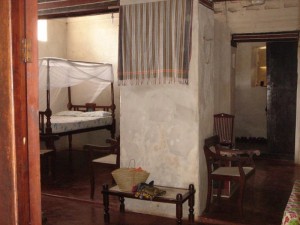In Zanzibar
A.C.Gomes – Ali Pira Harji – The Coutinho Family – Pereira De Lord
In Kenya
The Coutinho Family – D.V.Figueira – A.C.Gomes – C.D.Patel – Anderson & Mayer – T.A.Costa – Raphael Tuck – A.H.Wardle – W.D.Young
In Uganda
Alfred Lobo
The Portuguese Studio Photographers of Zanzibar
and Mombasa, as A.C.Gomes and a branch of the Coutinho family later on opened studios in the Kenyan (then B.E.A.) harbour.
Wider historical context
During the first half of the 19th century, the maritime towns of the East African coast, Zanzibar and Mombasa in particular, saw their population greatly expand.
Having annexed Zanzibar into the sultanate of Oman in the 1830s, Sultan Said al Busaidi developed new mercantile relationships and established an economic system based on large-scale plantations supported by slave labour which would produce cash crops for export to Europe and the Americas.
The introduction of the steam ship increased the rapidity and volume of trade. The Indian Ocean became a vibrant trading zone. The thriving economy of the maritime towns attracted wealthy financiers and businesses from the North Atlantic port cities, as well as from South Asia. Sultans would directly invite wealthy businessmen from India to Zanzibar, then the most attractive port of call in the western Indian Ocean, aiming at connecting the local economy to the markets in Bombay.
Migrations across the Indian Ocean to Zanzibar
South Asian migrants of modest means also started settling in the Swahili coast coming from Goa, Punjab and Gujarat regions, attracted by job opportunities and the intense circulation of manufactured goods in the western Indian Ocean, which facilitated the establishment of small businesses.
Towards the end of the century, the Imperial British East Africa Company(IBEAC) recruited South Asians to work on the construction of the Uganda railway line, which had got underway by 1895 and linked the port city of Mombasa to the interiors of Kenya and Uganda.
Many of these South Asian migrants settled in Zanzibar in the second half of the 19th century. Among them were Goans of modest means. In the early years the majority went into business and owned stores selling mainly Western merchandises. The most prominent retailers between the 1860s and 1900s in Zanzibar were of Goan origin. One of the main streets in the 1890’s market in Stone Town was called Portuguese Street (today Gizenga St.) where Goans, who were then Portuguese citizens, lived and had their shops. There were also tailors and chefs. Goan bakeries were highly reputed, especially in the 1890s.
In time they also became officers in the Sultan’s government and in the British government services, and some were trained as doctors, nurses, teachers and lawyers.
Goan photographers in Zanzibar
Portuguese Goan migrants in Zanzibar would be the pioneers of studio photography on the Swahili Coast.
A.C. Gomes had opened his first studio in Aden, Yemen, before 1869, and moved to Zanzibar in the early 1870s, establishing what was probably the first studio on the island (Hannavy2008: 343). Pereira de Lord brothers, E.C. Dias, the Coutinho Brothers and J.P. Fernandes followed suit. Ranchhod Oza, whose studio is still open today in Stone Town run by his son, although not of Goan origin, worked as a junior photographer with the firm Gomes and Son.
It was an era of wide interest in photography in Zanzibar. In 1883, Sultan Barghash, who had been exiled in Bombay for two years and familiarized with the studios of photography there, created a camera obscura in the high tower of Beit-al-Ajaib (the House of Wonders).
All these Goan photographers produced portraits for their European clients and Swahili coast elites, photographed the Sultan and his family, as well as produced postcard series with urban views, landscapes and images of local people and their lifestyle.
From their work we can infer much of the Swahili life at the end of the 19th and turn of the 20thcenturies, and these photographs contributed to shaping the perception and visualization of Zanzibar in the wider world in those days.
Manuela Palmeirim
The State University of Zanzibar, Tanzania
University of Minho, Portugal
Δ
